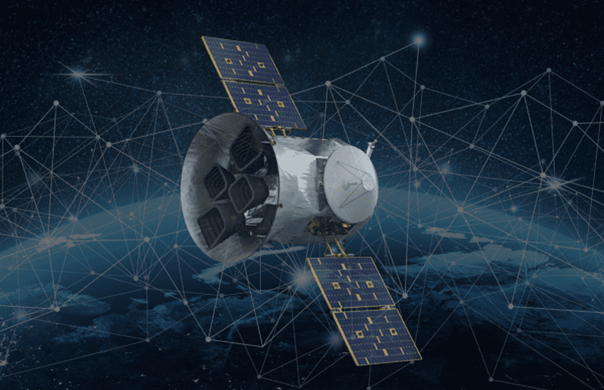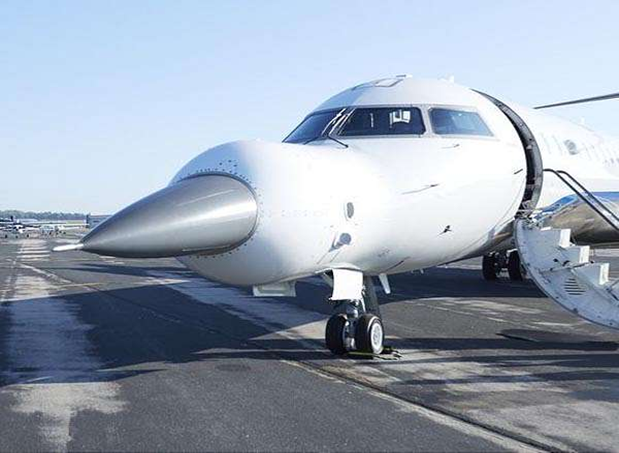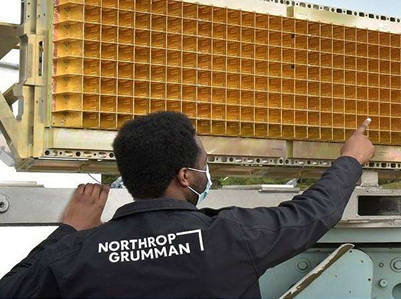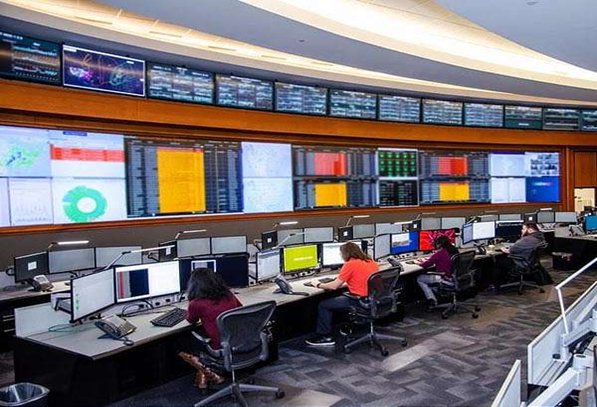TX026 スペースコミュニケーションテクノロジー
今回は、宇宙空間でのコミニケション技術、宇宙と地上とのコミュニケーション、装備品間(ドローンと戦闘機、偵察機と戦闘機、連合艦隊の指揮系統に関する通信網)での、セキュア―コミュニケーションテクノロジーに照準を合わせました。妨害を交わし、秘密性を保ち、着実な伝達機能を持たせるためのテクノロジ―、テクニックについての情報提供です。前にも述べたかもしれませんが、日本のIT産業に対して一番力を入れてほしい分野のフィールドです。
米空軍が進めている、スペースコミュニケーションテクノロジー、軍事サテライトとグランドステーションのセキュア―コミュニケーション技術のお話しです。(スパイダーオークが開発た、OrbitSecure を、軍事システムにインテグレーションし、運用性、安全性とかの機能評価をする調査研究事業)
OrbitSecureを空軍および米国宇宙軍のシステムに統合し、そのシステムを厳密な評価にかけるための調査研究契約
SpiderOak Updated communication software for the Airforce Secure Communication
SpiderOak wins second Air Force contract for secure space communications
by Staff Writers
Washington DC (SPX) Sep 13, 2021
OrbitSecure・スペース・プロトコルは、スペース・アーキテクチャ・データとシステムのオーソリティ、アイデンティティ、整合性、および機密性に関して、そして、当社の製品は、スペースのレガシーシステムとも、そしてまだ発売されていない新しいシステムとも、インテグレーションすることができます。

The U.S. Air Force has approved an approximately $750,000 Small Business Innovation Research grant to SpiderOak to test its new OrbitSecure secure communications protocol on military satellites and ground stations. The outcome will enable government agencies to leverage commercial space assets for federal missions in emerging hybrid space architectures that mix commercial and government satellites.
The grant will facilitate SpiderOak’s adaptation of its OrbitSecure commercial technology to new uses that are of importance to those who rely on satellites, including military and intelligence operators. This grant is a successor to a previous Air Force allotment that allowed SpiderOak to begin to demonstrate its OrbitSecure technology to various users in the Defense Department. This is yet another indication of SpiderOak’s commitment to bring zero-trust solutions to space environments and comes on the heels of the company’s addition of aerospace and small-satellite expert Phil Eichensehr to its federal advisory board.
In the current phase, SpiderOak will be required to demonstrate security enhancements in ephemeral key creation, key rotation, and key assignment via a “Dynamic Authority” that will create and distribute thousands of unique cryptographic keys to a specific user or satellite time, pass, or action. This innovation will help fulfil a need of the Armed Services for zero-trust software to create secure cryptographic communication channels in an ephemeral manner.
“Cyber-attacks on intelligence collection, communications, financial transactions, weather, navigation, early warning systems are just the tip of the threat iceberg facing players in this new space race,” stated Steve Nixon, President of the SmallSat Alliance, “Leveraging commercial security capabilities such as SpiderOak will help the government accelerate deployment, achieve repeatable deadlines and help bring new levels of security and resilience to our space infrastructure.”
Common approaches to key management usually lead to violations of temporal authority restrictions. For example, a ground station that is given a key to communicate with a satellite for one pass can use the key to communicate with the satellite on subsequent passes even if it was not commanded to do so. SpiderOak prevents this from happening through the utilization of agile re-keying that allows each key to remain valid for only a single pass (or access within a pass), preventing the use of a key outside of its intended scope.
Dave Pearah, CEO of SpiderOak, remarked: “Our success in winning this grant and moving to this new, higher level of investment, is a testament to our OrbitSecure commercial space products and their applicability to government uses.” He added, “We have crossed an important hurdle in our space software development, and our success with this contract will open many opportunities for the company while getting the military what it needs to exploit the emerging reality of a hybrid space architecture. Furthermore, this technology can work in any environment and has applications beyond space.”
Until recently, the traditional approach to operating spacecraft involved a single party operating the craft, the payload, and its ground network. This vertical integration allowed for the information security of the spacecraft to be built around the trust within an organization.
Radical increases in the number and uses of satellites are ushering in an era where operators are now using third-party ground stations, splitting the roles of spacecraft, and even sharing payload operators with other entities. In this hybrid, multi-party environment, security can no longer be based on trust. Updated communications software is crucial.
The OrbitSecure space protocol provides a strong assurance of the authority, identity, integrity, and confidentiality of the space architecture data and systems to which it is entrusted. Furthermore, our product can integrate with both legacy systems in space, and new systems that are yet to launch.
Related Links
SpiderOak
Read the latest in Military Space Communications Technology at SpaceWar.com

OrbitSecure(スパイダーオークの民間製品)は、複数の関係者が関与している場合に宇宙船とペイロードを管理できるインテリジェンス、監視、および偵察(ISR)情報を収集する為の保安システムです。
NGEWシステムとSABR(スクランブル・アジル・ビーム・レーダー)システムを併用した統括システムのテスト
Next generation electronic warfare and radar interoperability demonstrated at Northern Lightning
by Staff Writers
Rolling Meadows IL (SPX) Sep 10, 2021
Making its first test flight, the Northrop Grumman Next Generation Electronic Warfare (NGEW) system joined the AN/APG-83 Scalable Agile Beam Radar (SABR*) at Exercise Northern Lightning*. NGEW and SABR demonstrated full interoperability in a realistic and contested electromagnetic spectrum environment.

“When an EW system and a radar are able to work together fully, as demonstrated with NGEW and SABR, pilots can take advantage of capability without compromise,” said James Conroy, vice president, navigation, targeting and survivability, Northrop Grumman. “With the radio frequency (RF) spectrum becoming increasingly contested, this critical set of capabilities will support the F-16 for many years to come.”
Flying on the company’s test bed aircraft, NGEW and SABR demonstrated full pulse-to-pulse, multi-function interoperability in a contested operational environment. With SABR successfully engaging multiple air and ground targets, NGEW detected and identified a range of advanced threats, employing advanced jamming techniques capable of defeating those threats when required.
At the exercise, the two systems faced a high-density radio frequency environment generated by the Volk Field Combat Readiness Training Center, Joint Threat Emitters. These threat emitters allowed Northern Lightning participants to fly missions under conditions representative of near-peer electromagnetic spectrum environments.
NGEW leverages an open-systems, ultra-wideband architecture, providing the instantaneous bandwidth needed to defeat modern threats. This F-16 system is part of a mature product line of electronic warfare capabilities that can be adapted to virtually any platform. An F-16 will fly with the safety of flight-certified NGEW system in the summer of 2022.
Building on a 40-year legacy of producing radars for the F-16, Northrop Grumman provides the SABR APG-83 Active Electronically Scanned Array (AESA) fire control radar for the F-16 with advanced capabilities derived from Northrop Grumman’s family of highly successful 5th generation fighter AESA radars.
The greater bandwidth, speed and agility of the APG-83 enables the F-16 to detect, track and identify a greater number of targets faster and at longer ranges. In addition, it features all-weather, high-resolution synthetic aperture radar mapping to present the pilot with a large surface image for more precise target identification and strike compared to legacy systems.
The agreement was issued under SOSSEC Consortium’s Air Force Open System Acquisition Initiative (OSAI) Other Transaction Agreement (OTA) for prototyping. Northrop Grumman will continue to team with non-traditional defense contractors for the execution of this OTA project.
*Scalable Agile Beam Radar (SABR) is a multi-function active electronically scanned array radar.
*Exercise NORTHERN LIGHTNING: 訓練空域
- VISION: Deliver a premier Air National Guard joint training environment replicating today’s battle space with current and future weapons platforms.
- OBJECTIVE: Provide a tactical level, joint training exercise emphasizing user defined objectives resulting in tailored, scenario based, full-spectrum, high-end training.
- FOCUS: Opposed Air Interdiction and Close Air Support against a highly integrated air defense system composed of relevant surface-to-air and air-to-air threats in a contested/degraded operational (CDO) environment.
- MISSIONS: Offensive/Defensive Counter Air (OCA/DCA), Suppression/Destruction of Enemy Air Defense (SEAD/DEAD), and Close Air Support (CAS)
Emphasis placed on Joint integration of 4th and 5th generation assets from the Air National Guard, Air Force, Navy and Marines
もう一つ、スペースコミュニケーションテクノロジー関連情報として、“頑丈で、安全なコネクティビティ(接続性)”確立のための技術を紹介しておきます。これもNGが先行しているテクノロジー領域です。
Northrop Grumman demonstrates open architecture high-speed connectivity
by Staff Writers
San Diego CA (SPX) Aug 18, 2021
Northrop Grumman Corporation has validated the open architecture nature of its advanced gateway system offering by successfully integrating and demonstrating a new High Capacity Backbone (HCB) capability provided by L3Harris Technologies with one of Northrop Grumman’s platform agnostic gateway systems. By combining existing gateway translations across existing data links and AI enhanced networking, Northrop Grumman was able to rapidly integrate and demonstrate a new capability in a live over-the-air test, which was set up in less than a week.

The introduction of next-generation HCB gateway capabilities will enable data flow 300 times faster than the speeds previously available to take advantage of processing speeds needed to help unlock the advanced network architecture needed for the Department of Defense’s (DOD) Joint All Domain Command and Control (JADC2) effort.
“With this successful demonstration, we have taken HCB-enabled gateways from concept to reality in less than one year,” said Ian Reynolds, director, network solutions, Northrop Grumman. “Our platform agnostic, HCB-enabled gateway systems are designed to deliver the enhanced connectivity and secure processing speeds needed to introduce a wide range of new capabilities that will be critical for maintaining a technological advantage in network-centric, all-domain environments.”
This trial featured an L3Harris HCB system using AESA apertures supporting 600 Mbps and showcased our teams ability to move quickly to integrate new gateway capabilities from industry partners and deliver the Open Mission System and Open Communications System (OMS-OCS) capabilities needed for the JADC2 network using industry standard hardware (3U VPX).
Northrop Grumman’s family of open architecture gateways are designed to gather data from the HCB network and quickly share actionable information across air, land, sea and space domains. These gateways include a multi-level security system and advanced functions such as cloud computing, machine learning, secure and ethical artificial intelligence, next generation datalinks and the use of third-party software and sensor solutions. By gathering information from multiple platforms using beyond line-of-sight, line-of-sight voice and data networks-including 5th generation networks-Northrop Grumman’s HCB-enabled gateway systems will significantly enhance the situational awareness picture for warfighters operating in JADC2 environments.
“As the premier provider of high capacity directional CDL networks, L3Harris looks forward to supporting the DoD’s JADC2 efforts with future HCB team demonstrations,” said Ron Fehlen, VP and GM, U.S. Air Force programs, L3Harris. “Our resilient communications, airborne fielded datalinks, and high bandwidth allows a High Capacity Backbone to move massive data rapidly across networks and create path diversity over the tactical edge to keep warfighters connected.”
Northrop Grumman’s advanced networking technologies, including its HCB gateway systems, help warfighters and branches of the military easily communicate and securely share a Common Operational Picture to create actionable information across air, land, sea and space.
L3Harris is an agile global aerospace and defense technology innovator, delivering end-to-end solutions that meet customers’ mission-critical needs. The company provides advanced defense and commercial technologies across air, land, sea, space and cyber domains. L3Harris has approximately $18 billion in annual revenue and 47,000 employees, with customers in more than 100 countries.
一度に欲張り過ぎかもしれませんが、もう一つ、サテライト・ネットワーキング・ソリューションのお話し。
これは、最前線で戦っている兵隊さんが、状況判断のための情報を集める際に、必要とする情報へのアクセスを容易に、確実に、確保できるようにする為の技術について。
Hughes awarded IDIQ Contract by U.S. Air Force to offer enterprise satellite networking solutions
by Staff Writers
Germantown MD (SPX) Aug 18, 2021
Hughes Network Systems has been awarded one of several prime positions on an indefinite-delivery/indefinite-quantity (IDIQ) contract with a ceiling of $950,000,000 by the U.S. Air Force to support its Advanced Battle Management System (ABMS). Hughes will offer flexible satellite communications solutions that leverage open systems design, modern software and algorithm development in order to enable ABMS, part of the broader Joint All Domain Command and Control (JADC2) effort to deliver information accessibility to the warfighter.
Our leading, open standard, interoperable network solutions enable Department of Defense networks to operate as one.

“This opportunity reflects our leadership in engineering open standard, interoperable network solutions that enable Department of Defense networks to operate as one,” said Rick Lober, vice president and general manager of the Defense and Intelligence Systems Division at Hughes. “We look forward to bringing intelligent, multi-transport technologies, such as our unique Terminal Management Agent, to deploy the resilient networking the Air Force requires for mission assurance.”
This IDIQ contract is part of a multiple award, multi-level security effort to provide development and operation of systems as a unified force across all domains (air, land, sea, space, cyber, and electromagnetic spectrum) in an open architecture family of systems that enables capabilities via multiple integrated platforms.
今回は、これで終わりです。お疲れさまでした。
Best regards,
Shoichi Sugiyama, Ph.D.

